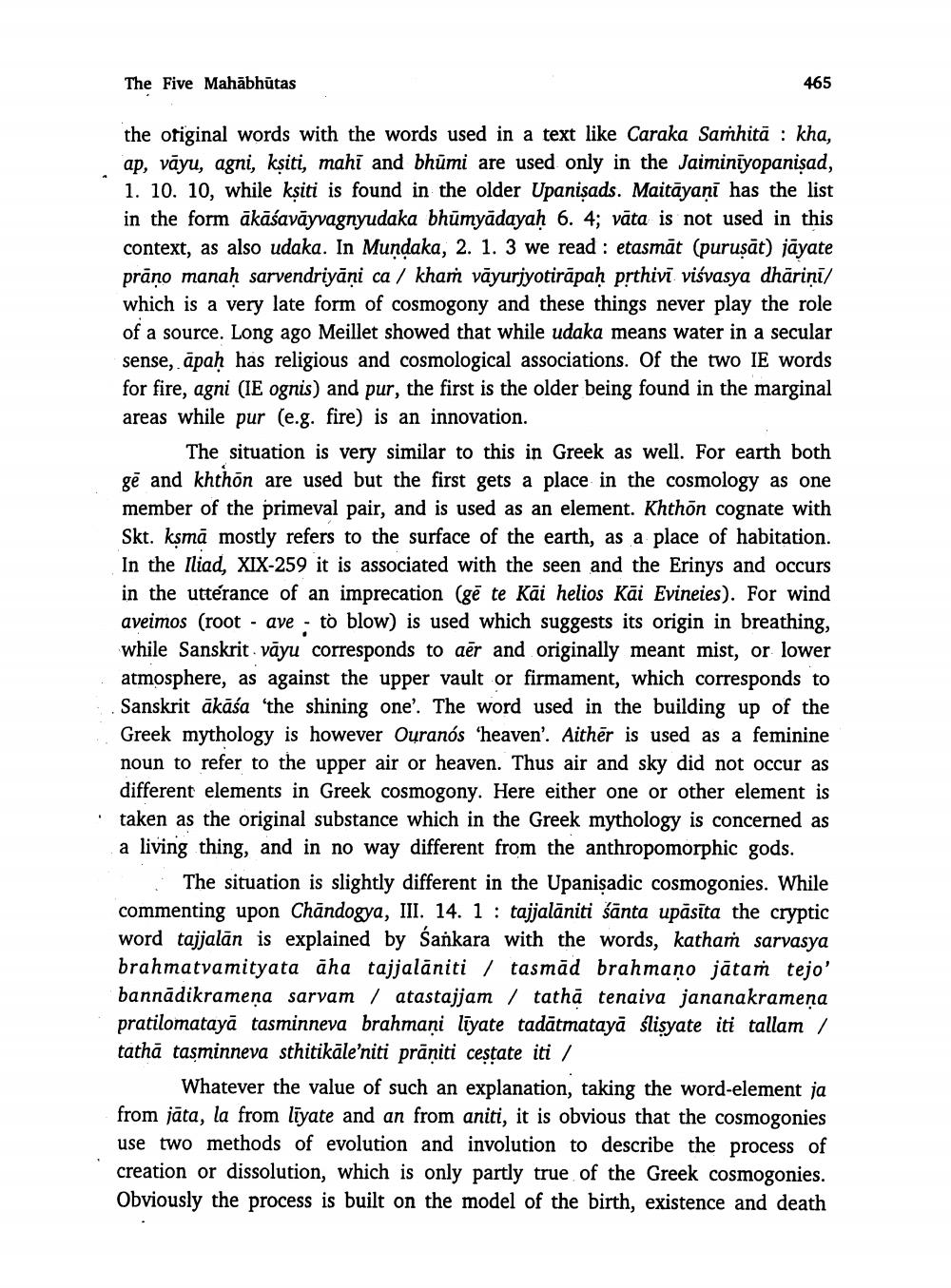________________
The Five Mahābhūtas
465
the otiginal words with the words used in a text like Caraka Samhitā : kha, ap, vāyu, agni, ksiti, mahi and bhūmi are used only in the Jaiminiyopanisad, 1. 10. 10, while ksiti is found in the older Upanisads. Maitāyani has the list
the form akāśavāyvagnyudaka bhūmyādayah 6. 4; vāta is not used in this context, as also udaka. In Mundaka, 2. 1. 3 we read : etasmāt (purusät) jāyate prāno manah sarvendriyāni ca / kham vāyurjyotirāpah prthivi visvasya dhārini/ which is a very late form of cosmogony and these things never play the role of a source. Long ago Meillet showed that while udaka means water in a secular sense, āpaḥ has religious and cosmological associations. Of the two IE words for fire, agni (IE ognis) and pur, the first is the older being found in the marginal areas while pur (e.g. fire) is an innovation.
The situation is very similar to this in Greek as well. For earth both gē and khthon are used but the first gets a place in the cosmology as one member of the primeval pair, and is used as an element. Khthon cognate with Skt. ksmā mostly refers to the surface of the earth, as a place of habitation. In the Iliad, XIX-259 it is associated with the seen and the Erinys and occurs in the utterance of an imprecation (gē te Kāi helios Kāi Evineies). For wind aveimos (root - ave - to blow) is used which suggests its origin in breathing, while Sanskrit vāyu corresponds to aēr and originally meant mist, or lower atmosphere, as against the upper vault or firmament, which corresponds to Sanskrit ākāśa 'the shining one'. The word used in the building up of the Greek mythology is however Ouranós 'heaven'. Aither is used as a feminine noun to refer to the upper air or heaven. Thus air and sky did not occur as
different elements in Greek cosmogony. Here either one or other element is • taken as the original substance which in the Greek mythology is concerned as a living thing, and in no way different from the anthropomorphic gods.
The situation is slightly different in the Upanisadic cosmogonies. While commenting upon Chāndogya, III. 14. 1 : tajjalāniti śānta upāsīta the cryptic word tajjalān is explained by Sankara with the words, kathaḥ sarvasya brahmatvamityata aha tajjalaniti / tasmād brahmano jātam tejo' bannādikramena sarvam/ atastajjam / tathā tenaiva jananakramena pratilomatayā tasminneva brahmani līyate tadātmatayā slisyate iti tallam / tathā tasminneva sthitikāle’niti prāniti cestate iti /
Whatever the value of such an explanation, taking the word-element ja from jāta, la from līyate and an from aniti, it is obvious that the cosmogonies use two methods of evolution and involution to describe the process of creation or dissolution, which is only partly true of the Greek cosmogonies. Obviously the process is built on the model of the birth, existence and death




